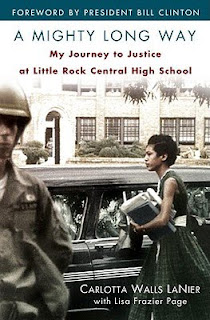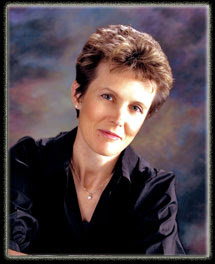
by Karla Oceanak
I’m a reader, a writer, and a mother of three boys. My house is atumble in books in general (not to mention dirty socks, Legos, hockey gear, etc.), but I bet you’d notice straightaway the preponderance of comic books and graphic novels littering every surface.
My boys like graphic texts. Yes, they read “plain” novels and nonfiction, too, but in our house the books with the most tattered covers and cracked spines have titles like Calvin and Hobbes, The Far Side and The Wimpy Kid.
Now you’ve gotta understand that I’m an English-major type. Perhaps like you, I’ve been trained to believe that “literature” (in a British accent) is by definition dense and difficult. Frothy, simple books might be fun reads, but they don’t count, really.
Or do they? When I started writing Artsy-Fartsy and working with illustrator Kendra Spanjer on our particular take on the graphic novel concept, I was pretty confident kids would like the book. But would it be “good” for them?
Part of the Aldo Zelnick shtick involves fun but challenging vocabulary. So yes, that vitamin-fortified component would meet with both Mom- and English-major approval. (It’s like sneaking wheat germ into their cupcakes.) But the silly story and the drawings? The sprinkles of illustrated potty humor?
These questions nagged me. So I did some research. Here’s what I learned.
Kids need to read to become good readers.
In a 2007 study by the National Endowment for the Arts, researchers found that the highest reading scores on standardized tests correlated with the frequency of reading for fun. For fun! Another classic study of 5th graders showed that total daily time spent reading—regardless of what was being read—predicted reading scores. Kids who read 90 minutes a day tested in the 98th percentile on reading tests; kids who read just 5 minutes a day tested in the 20th percentile.
Apparently, when it comes to reading, volume matters more than that esoteric, subjective criterion we call “quality.” If our goal is to get and keep kids reading every day, we need to let them choose books they enjoy. This includes graphic texts.
Visuals increase comprehension and recall.
In her book Teaching Visual Literacy in a Multimedia Age, Glenda Rakes points out that combining visuals with text increases comprehension. Using PET scans, researchers have seen that the left brain lights up when exposed to verbal information and that the right brain lights up when shown visual information. Combine visuals with text and you get connectivity. Graphic texts feed both halves of the brain. And because visuals are stored more readily in long-term memory, we remember better when text is accompanied by visuals.
Boys, especially, may need visuals.
In Connecting Boys with Books 2, Michael Sullivan says that the corpus callosum—the bridge of nerve tissue that connects the brain’s two hemispheres—is, on average, 10 percent larger in girls than in boys. What’s more, functional MRIs show that when boys read, the left hemisphere of the brain lights up, but when girls read, both hemispheres light up. Girls visualize earlier and better than boys do, which means that boys, especially, benefit from text illustrated by graphics.
I could go on and on, because I wolfed down lots of research on the reading brain, the reluctant reader, vocabulary acquisition, etc., and I find it all fascinating. (Get Proust and the Squid by Maryanne Wolf if you want a geek-peek into how the brain reads.)
But suffice it to say that I felt vindicated. Graphic texts “count!” Even though Artsy-Fartsy and the Aldo Zelnick comic novel series is “a fun read,” it’s good for kids because it keeps them reading. Children who are taught that only some reading “counts” are being set up to think of themselves as reading failures. Besides, it’s not true. And it’s an attitude that, over time, may well quash their reading altogether.
Mark Twain said that the person who doesn’t read is no better off than the person who can’t read. Lifelong literacy means continuing to read, for self-education as well as for pleasure. I’m sure I’m preaching to the choir here, but let’s keep our kids reading for fun, so they’ll grow into grown-ups who revel in the pleasures of a good book, and who one day live in their own houses with kids and books atumble.
Karla Oceanak is the author of Artsy-Fartsy and Bogus, the first and second books in the alphabetical Aldo Zelnick comic novel series for kids.
 In 1957, Carlotta LaNier was one of the 9 brave students to attend the previously all-white Little Rock Central High School in Arkansas, under U.S. military guard and enduring endless taunting from their white peers. Just three years after the U.S. Supreme Court ordered the desegregation of the nation's schools via Brown vs. Board of Education, these students were the first African-Americans to graduate from a overwhelmingly white-majority school during a time when racial tensions were running high across the country.
In 1957, Carlotta LaNier was one of the 9 brave students to attend the previously all-white Little Rock Central High School in Arkansas, under U.S. military guard and enduring endless taunting from their white peers. Just three years after the U.S. Supreme Court ordered the desegregation of the nation's schools via Brown vs. Board of Education, these students were the first African-Americans to graduate from a overwhelmingly white-majority school during a time when racial tensions were running high across the country. igh gives the reader a personal insight into the immense challenges presented by LaNier's pursuit of a better education.
igh gives the reader a personal insight into the immense challenges presented by LaNier's pursuit of a better education. sband in Englewood, Colorado.
sband in Englewood, Colorado.








 For Book store
For Book store